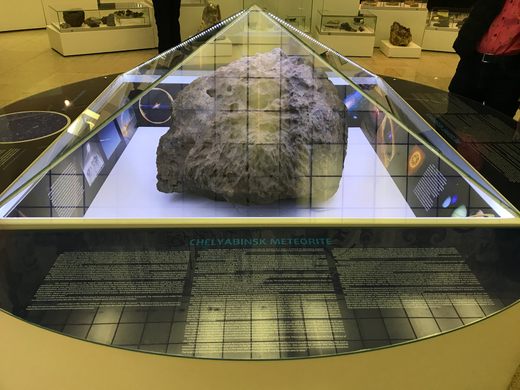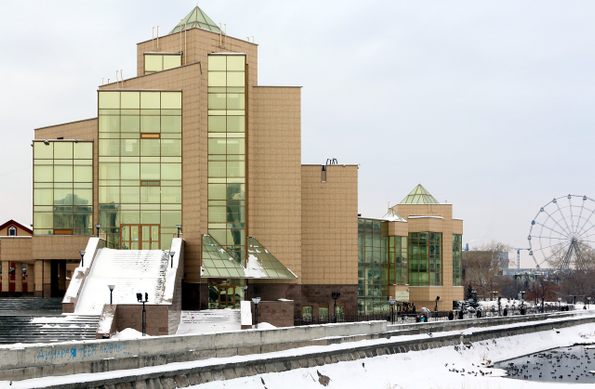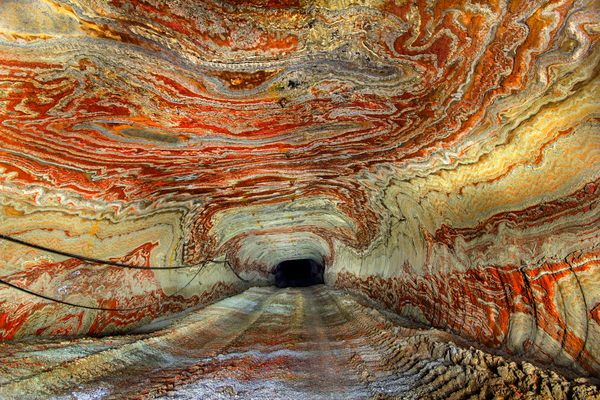Chelyabinsk Meteorite
The largest-known fragment of an asteroid that exploded over the southern Ural region in 2013.
On February 15, 2013, an asteroid was hurtling toward Earth. The celestial object measured an estimated 20 meters (65 feet) wide and weighed approximately 12,000 tons. When the asteroid reached our planet’s atmosphere, it was moving at a rate of about 19 kilometers per second (12 mi / sec). As it encountered the thick layer of air around our planet the asteroid exploded—for a short time, it shone brighter than the sun.
The explosion occurred above the Chelyabinsk Oblast. It was so forceful that the resulting shock wave broke windows and damaged buildings in several cities. Though no one died, more than 1,000 people suffered injuries from broken glass and other secondary effects of the impact.
Fragments of the meteor were scattered throughout the southern Ural region. Small pieces were common, but a few large chunks of the asteroid were also located. One particularly large fragment was discovered in Lake Cherbakul, when fishermen came upon a six-meter (20-foot) hole in the water’s frozen surface. Several months after the date of impact, scientists recovered a 654-kilogram (1,442 pounds) meteorite from the bottom of the lake. It remains the largest known fragment. It is now displayed in the State History Museum of South Ural.



















Follow us on Twitter to get the latest on the world's hidden wonders.
Like us on Facebook to get the latest on the world's hidden wonders.
Follow us on Twitter Like us on Facebook